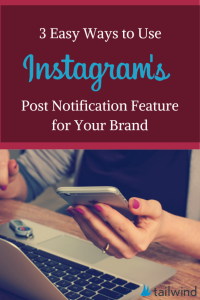If you have been spending money on customer acquisition, then you must have realized two things by now : One, Google Adwords is absurdly expensive, and Two, Facebook is not something where people come to buy. In other words, while the conversion on Adwords is likely to be high, the costs are on the higher side as well. On the other hand, while Facebook advertising can work out cheaper in comparison, the conversions are not as great as Adwords.
How you negotiate the Adwords space is a discussion for another day. In this topic, we will see how to generate attractive new SEO leads for your digital marketing agency using Facebook. Since this topic is aimed at digital marketing consultants, I would assume that a fair share of my readers would have already dabbled with Facebook advertising in some way or other. However, for the sake of comprehension, I shall keep this article simple so that it is understandable to someone who has not spent a lot of time on Facebook ads.
To begin with, there are two primary channels for acquiring SEO leads through Facebook advertising. The first way is to create regular ads targeted at your audience while the second way is retarget – that is, reinforce what you offer to people who have already visited your website from other sources – including Facebook ads. Let us start with retargeting first.
Creating Effective Retargeting Ads
If you make use of LeadJoint to generate new SEO leads, you are likely to have sent out quite a few cold-emails to hot SEO leads with a proposal. Most often, what happens is that these leads visit your website and may possibly move on. This is also the case with traffic acquired through your SEO, content marketing and social media marketing efforts. Retargeting is a cost-effective method to reinforce your proposal to your website visitors through follow-up ads on Facebook.
This is how to get it done.
Step 1 : Create custom URLs for every target source
Let us assume your main source of website traffic are your cold emails to the leads you obtained from LeadJoint, and guest posts you write on SEO blogs. Try to create unique landing page URLs for people visiting via these different sources. For instance, when introducing your website in your cold email, use a UTM parameter that specifies the source as email. Similarly, if you write for SearchEngineJournal, have a UTM parameter that specifies this in your by-line. This way, it is easy for you to exactly know the sources the visitors come from.
Step 2 : Add conversion pixel
When you create a new ad on Facebook, you are provided the option to add a conversion pixel. This is basically a tracking script you embed on your website that helps Facebook to add these visitors to a custom audience profile (if you have one). This is again an essential prerequisite to retargeting.
Step 3 : Create custom audience
Now that you have set up custom URLs for every unique traffic source you want to traffic, it is time to create custom audiences on Facebook. This is a necessary prerequisite to Facebook retargeting. When you choose to create a new ad on Facebook, you will see a field that reads ‘Custom Audience’. Here, click ‘Create New Custom Audience’

Step 4 : Create separate audiences for every source
How you retarget a lead you contacted via cold email is going to be different from the way you would retarget a visitor who came to your website via a blog post. In the Custom audience window, create separate audience profiles for each of these different sources. This should be possible by specifying the UTM parameter that you used for these traffic sources.

Step 5 : Create unique retargeting ads for every audience
Once you have a custom audience in place, create unique ads that target these specific customers. For instance, you can create an ad to follow up with your email proposal. On the other hand, if you want to target a direct visitor, you can advertise your “self help auditing tool” – this way, you can continue to reach out to your website visitors to enhance your conversions.
Using Regular Facebook Advertising
If you do not have a stream of visitors coming to your website already, it is a good idea to target new prospects via Facebook’s regular advertising. One common mistake that I have noticed with SEO agencies seeking new leads via Facebook ads is that they do not segment their audiences sufficiently. What has worked for me (and what should ideally work for you as well) is the following :
Step 1 : Target decision makers
If you offer local SEO services, then it is likely that you are targeting just the few specific cities you are available in. But not all Facebook users from the city are your audience. People who would need your service are either business owners, CEOs or marketing managers. So, you will have a better ROI targeting these specific groups. When you create a new Facebook ad, click the ‘More Demographics’ button below the Languages option to select Work → Job titles

In this option, pick titles that are associated with decision makers (who you would typically speak to for an SEO assignment). This includes titles like Owner, Owner-Operator, Chief Executive Officer, Chief Marketing Officer, Marketing Director, etc.
Step 2 : Ad communication
Facebook advertising works with two types of communication – one, where the viewer is already aware of SEO and you talk to them about their own website’s potential; and two, where the viewer is not aware of the business potential from Google. Make sure your ad message communicates one of the two.
Step 3 : Offer a lead magnet
Do not point your Facebook ad directly to your homepage. Instead, take them to a landing page that is seamlessly integrated with your ad message. For instance, if the ad text reads something on the lines of “Is your website still not ranking in Google despite all your efforts?”, then the landing page should provide the user with a lead gen form that provides free SEO auditing. On the other hand, if the ad text is on the lines of “Do you know how you can double your business with Google?”, then the landing page could point to a free ebook that the visitor can download after providing their credentials. By all means, make sure you gather their email or phone number.
Step 4 : Retarget
Continue to retarget these visitors on Facebook until they become customers. This ensures top-of-the-mind recall when these business indeed start looking for an SEO agency.
Facebook is a powerful medium to acquire new leads for your SEO business. Executed right, this can be a sustainable source for growing your clientele. How has your experience with Facebook advertising been? Share your experience in the comments below.
THIS ARTICLE ORIGINALLY APPEARED ON THE LEADJOINT BLOG
(278)







